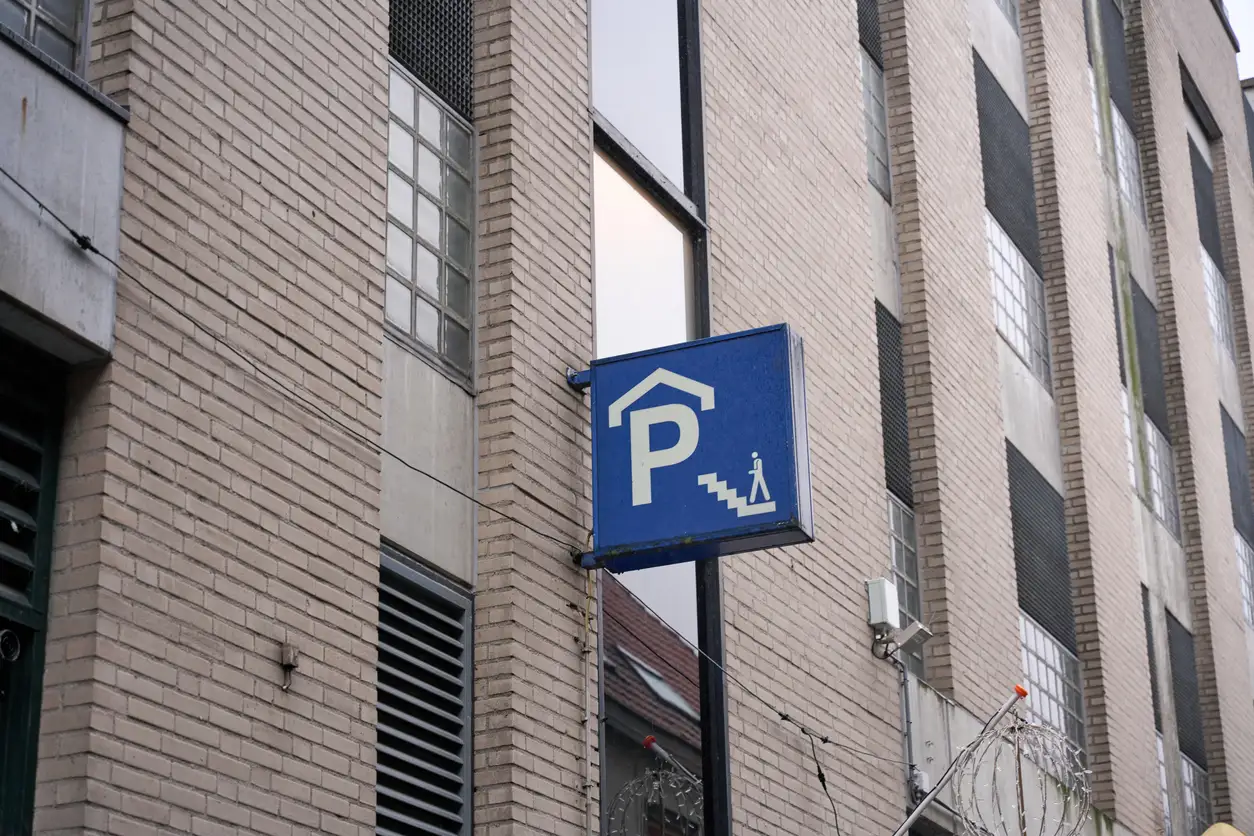Are you a trader in margin goods? If so, you may apply the margin scheme! This means that you do not charge VAT on the entire turnover, but on the difference between the sales price and the purchase price, or the profit margin. Have you made a profit? Then your profit margin is positive and you have to pay VAT on it. However, did you lose money? Then the profit margin is negative and you do not have to pay VAT, but unfortunately you will not get VAT back either.
What are margin goods?
Margin goods are used goods that you have purchased without VAT. Under certain conditions, art, antiques and collectibles that you bought or imported with VAT can also qualify as margin goods.
Used goods
Used goods are products that can be used again by your customer, whether or not after refurbishment. This includes, for example, items you bought from a private individual, even if they have never been used. In addition, home-made or farmed goods, such as bred horses, also fall under used goods.
Conditions for the margin scheme
The main condition for the margin scheme is that the VAT has not already been deducted at the time of purchase. If you purchase used goods as a reseller, the supplier must not have been able to deduct the VAT when buying, producing, growing or breeding the goods. Only then can you apply the margin scheme.
Choice of normal VAT calculation
You can always choose to charge VAT on the selling price of margin goods instead of the profit margin. This can be advantageous if your customer is an entrepreneur and entitled to deduct VAT.
That way, you can decide what works best for your situation!
Calculating VAT normally on margin goods
If you sell margin goods, you do not mention VAT on the invoice, but the VAT is included in the price. If your customers are entrepreneurs who are allowed to deduct VAT, they cannot deduct the VAT when you apply the margin scheme. In that case, it may be more advantageous to choose the normal VAT scheme.
Difference between margin scheme and regular VAT scheme
Let's look at two examples of how VAT is calculated:
Example 1: Calculation VAT with margin scheme
Suppose you have bought a cupboard for €4,000 and want to earn €1,000 on it. This is how you calculate the selling price when applying the margin scheme:
-
- Purchase price: €4,000
- Profit margin excluding VAT: €1,000
- Sales price excluding VAT (purchase price + profit margin): €4,000 + €1,000 = €5,000
- VAT (21%) on profit margin: €1,000 / 100 x 21 = €210 (Note: you may not include this VAT on the invoice!)
- Sales price including VAT: €5,000 + €210 = €5,210
Example 2: Calculating VAT using the ordinary VAT scheme
Now we are looking at the same situation, but with the regular VAT regime:
-
- Purchase price: €4,000
- Profit margin excluding VAT: €1,000
- Sales price excluding VAT (purchase price + profit margin): €4,000 + €1,000 = €5,000
- VAT (21%) on sale price: €5,000 / 100 x 21 = €1,050
- Sales price including VAT: €5,000 + €1,050 = €6,050
What's the difference for your customer?
If you apply the margin scheme, your customer will pay €5,210. But if you apply the normal VAT scheme, he will pay €6,050. However, if your customer can deduct VAT, he can reclaim the VAT of €1,050 as input tax, so he ends up paying €5,000.
In this case, it is more advantageous for your customer to apply the normal VAT scheme, as he can reclaim the VAT. For you, it makes no difference on balance, as you receive the same selling price in both cases.
Your records
If you sell margin goods and charge VAT in the process, you need to adjust your records. How to do this is explained below.
Administrative consequences when selling under the normal VAT regime
When you sell margin goods under the normal VAT scheme, specific administrative rules apply. You can apply these rules under both the globalisation method and the individual method, usually when your customer is a business that can deduct VAT.
What should you do?
- Goods that you have purchased as margin goods may no longer appear as margin goods in your records.
- Subtract the purchase amount of margin goods sold from the total amount of margin purchases.
- Record the goods sold in your records as normally taxed goods.
Keeping records when trading in margin goods
Trade in margin goods is subject to general administrative obligations, but there are also additional rules. Calculating VAT can be done in two ways:
- Individual method
Here, you calculate the VAT per individual item and keep track of purchases and sales per item in your records. - Globalisation method
Here, you calculate VAT on the total profit margin in a return period.
Both methods are subject to additional administrative obligations.
Calculating VAT: margin scheme with individual method
In the individual method, you calculate the total of positive profit margins in the period. Negative profit margins are not included.
Example
- Profit margin including VAT: €10,000
- VAT: (€10,000 x 21/121 =) €1,736
- Profit margin excluding VAT: (€10,000 - €1,736 =) €8,264
In your sales tax return, enter:
- Right-hand column (VAT): €1,736
- Left column (sales): €8,264
Calculating VAT: margin scheme with globalisation method
Under the globalisation method, you calculate VAT on the profit margin in the return period. You determine the profit margin by subtracting the margin purchases from the margin sales in the same period. If the profit margin is positive, you multiply it by 21/121 or 9/109, depending on the VAT rate.
Example
- Sales: €40,000
- Purchases: € 25,000
- Profit margin including VAT: (€40,000 - €25,000 =) €15,000
- VAT: (€15,000 x 21/121 =) €2,603
- Profit margin excluding VAT: (€15,000 - €2,603 =) €12,397
In your sales tax return, enter:
- Right-hand column (VAT): €2,603
- Left column (sales): €12,397
Note:
If you trade in goods taxed at different VAT rates (e.g. 21% and 9%), you need to calculate the profit margin by rate.
Administrative obligations in trade in margin goods
Do you trade in margin goods? Then, in addition to the general administrative requirements, there are four additional obligations for VAT. This applies to both the individual method if the globalisation method.
The four additional commitments
- Keep margin goods and other goods separate.
- Keep rate groups separate.
- Do not include VAT on the invoice.
- Draft a purchase statement for purchases of €500 or more.
Below you can read exactly what this means.
- Keep margin goods and other goods separate
In your records, you record margin goods separately from other goods. This applies to both purchases and sales of margin goods. Your accounting records should clearly show the profit margin per margin goods. So make sure you have clear records in which everything is neatly separated.
- Keep rate groups separate
If you sell margin goods with different VAT rates, such as 21% and 9%, you need to calculate the profit margin for each rate group.
Example: You are an antiques dealer and sell second-hand books (9% VAT) in addition to antique furniture (21% VAT). You keep the sales of these books separate in your accounts and calculate the profit margin by rate group. This avoids confusion and keeps your accounts clear.
- Do not mention VAT on the invoice
Under the margin scheme, you are not allowed to mention VAT on the invoice. So what do you mention? One of the following terms:
- Special scheme - used goods
- Special arrangement - works of art
- Special arrangement - objects for collections or antiques
With this clear description, your customer will know that the margin scheme has been applied.
- Draw up a purchase statement for purchases of €500 or more
Do you purchase margin goods for €500 or more? If so, you must submit a purchase declaration set up. This shows that the goods were purchased without deductible VAT. This declaration is an important part of your records and can be requested by the tax authorities in case of audits.
Which method do you use?
The choice between the globalisation method and the individual method depends on the goods you are trading with. For some goods, the globalisation method mandatory, while with other goods you are free to use the individual method.
When is the globalisation method mandatory?
For the following goods, you must use the globalisation method:
- Means of transport such as cars, motorbikes, bicycles, mopeds and caravans
- Clothing
- Furniture
- Books and magazines
- Photo, film and video equipment
- Videotapes, DVDs, CDs, LPs, music cassettes, etc.
- Musical instruments
- Household and electrical appliances
- Pets
- Art, antiques and collectibles
Used parts, accessories and supplies of these goods are also subject to the globalisation requirement.
When do you use the individual method?
For goods not included in the categories listed above, apply the individual method allow. Keep in mind that under the individual method you are not allowed to offset negative profit margins against positive profit margins, while under the globalisation method you are allowed to do so.
What if you are an auctioneer or intermediary?
Are you an auctioneer or acting as a commission agent? Then you may not apply the globalisation method.
Declaring trade in margin goods
The method you choose determines how you calculate and declare VAT.
- At the globalisation method you may offset a negative profit margin against a positive margin in a later period.
- At the individual method may not, but you enter the VAT on the profit margin directly.
Enter the VAT on your profit margin in the sales tax return at section 1:
- Right column: VAT amount
- Left column: profit margin excluding VAT
Do you have both margin turnover and normal turnover? Then add both amounts together. You may not offset negative profit margins on margin goods against turnover on normal goods.
Set off negative profit margin
With a negative profit margin (when your purchases exceed your sales in a tax period), you cannot reclaim VAT. But if you have the globalisation method used, you can offset the negative margin against a positive margin in another period, within the same year. At the end of the year, you may use a so-called annual reduction allow you to offset negative margins on an annual basis with positive margins in the following year.
Examples
Calculating VAT after negotiation
You want to sell a bike for €321, but after negotiation, your customer pays €295.
- Purchase price bicycle: € 200
- Profit margin including VAT: € 95
- Btw: 21/121 x € 95 = € 16,49
Deduct VAT as input tax
Have you paid VAT on purchases, such as new parts for repairs? You can deduct this VAT as input tax in your tax return. This keeps your costs low and your administration orderly.
Example: repairing and selling margin goods
You buy a used bike for €100, repair it with €75 worth of new parts, and sell it for €350.
- Profit margin including VAT: € 250
- VAT for declaration: 21/121 x € 250 = € 43,39
You do not deduct the cost of the parts from the profit margin, but you can deduct the VAT on them as input tax.
Trade-in goods and VAT calculation
When exchanging goods, you are dealing with two transactions:
- You buy a margin good from your customer.
- You sell a new good or other margin good to your customer.
Example 1: New car with trade-in
- Sales price new car: € 25,000 (including VAT and bpm)
- Bpm: € 5.766
- Sales price excluding bpm: € 25.000 – € 5.766 = € 19.234
- Btw: 21/121 x € 19.234 = € 3.338
- Buy-in price trade-in car: € 10.000
- Amount paid by the customer: € 25.000 – € 10.000 = € 15.000
Example 2: Selling a trade-in car
- Sales price trade-in car: € 11.000
- Purchase price: € 10.000
- Profit margin including VAT: € 1.000
- Btw: 21/121 x € 1.000 = € 174





